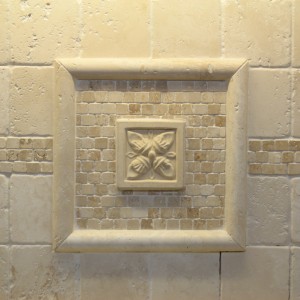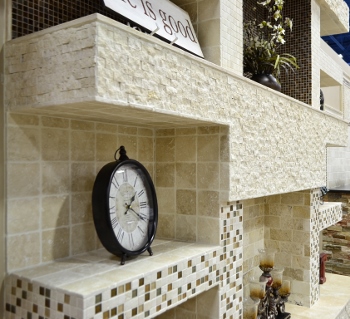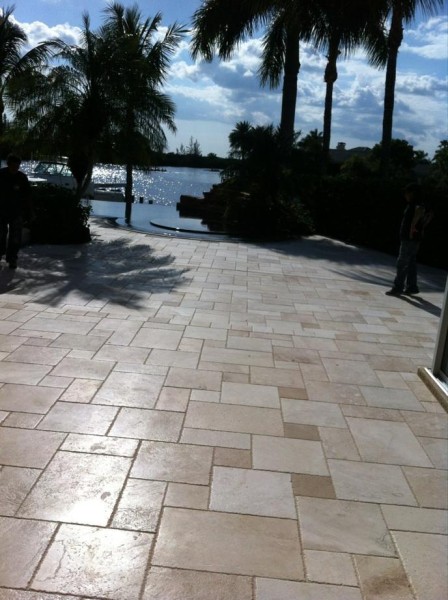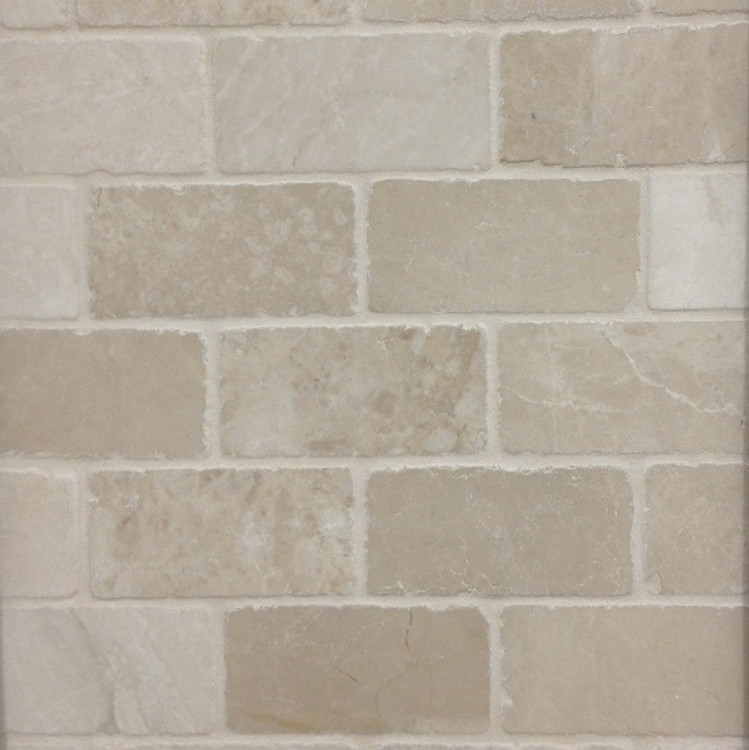13 Facts About Travertine Tile
Posted by TOA's Blog Team on Nov 9th 2023
Are you intrigued with Travertine and its timeless natural beauty? Would you like to learn more?
It's a favorite of ours and that's why we've put together this article.
Here are 13 facts about Travertine Tile.

13 Marvelous Facts About Travertine Tile
1 - Travertine Tile is Limestone
That's right! Travertine is a type of limestone that forms in hot mineral springs around the world.
According to Wikipedia, limestone is a sedimentary rock made of calcium carbonate, a primary component of shells.
In North America, the most notable Travertine formation is Yellowstone National Park. Have you been there?
2 - Another Name for Travertine is 'Lapis Tiburtinus"
The name ‘travertine’ was derived from the name of the ancient Italian city Tibur, now Tivoli, with roots beyond Roman times.
Travertine was known as lapis tiburtinus, i.e., tibur stone, which over time became travertine.
3 - Travertine Comes From Around the World
Most Travertine is imported to the US from quarries in Italy, Iran, Mexico, Turkey, and Peru. Tile Outlets of America obtains most of its Travertine from Turkey.
(Check out Turkey’s Pamukkale natural Travertine terraces and hot springs.)
4 - It's Mined Using a Variety of Methods
Travertine is mined from quarries all over the world using many methods including Channeling machines, Wire Saws, Chain Saws, and Water-Jet Cutting machines.
From the quarry, it is either stored in a warehouse or taken to a mill or production facility where it is cut into slabs and sent through different processes depending on the type of finish desired.
5 - Naturally Occurring Holes & Troughs Make Travertine Tile Unique
When you look at it, you’ll notice what makes Travertine unique: naturally occurring holes and troughs on the surface.
Travertine is also porous. Both of these characteristics result from how the stone forms over time.
6 - Holes & Troughs in Travertine Can Be Filled or Left Unfilled
The holes and troughs that you find in Travertine can be filled with grout or left unfilled. In many cases, Travertine tile is filled at the factory during production.
The size of the holes indicates whether or not the stone is a premium, commercial or select cut.
As a rule of thumb, the smaller the hole, the more premium the cut of Travertine.

7 - You'll Find Travertine Used Across Europe Going Far Back into History
Travertine is often used as a building material and you can see it in architecture across Europe dating back to the Roman Empire (Burghausen Castle in Germany). (Warren noticed ancient Travertine sidewalks in Jerusalem.)
The Roman Coliseum and bathhouses in Rome and the Lobby of the Sears Tower and first floor walls at the UCLA medical center were all built with Travertine.). Travertine has been used in everything from aqua-ducts to load-bearing pillars.
It is most commonly used today for floors, walls, and backsplashes.
(You'll find it available at Tile Outlets of America in classic floor patterns.)
8 - Available in a Variety of Colors
Travertine comes in a variety of colors including white, tan, brown, cream and gold.
You can also find it in varying shades of red, pink and orange.
Some Travertine has black veins running through it.
As you might imagine, that's what makes it so desirable and such a classic.
9 - Produced in a Variety of Styles
Travertine is produced in a variety of styles including, honed, tumbled, polished, brushed, saw cut and chiseled edge.
>> See Travertine Tile Finishes: honed, tumbled, polished and chiseled edge
10 - Find Travertine Tile in a Range of Sizes
Modern Travertine tile encompasses a range of sizes. The most common tile sizes are 4x4, 6x6, 12x12, and 18x18 and tile trim pieces.
11 - Use Travertine Inside and Outside
You can decide to use Travertine inside or outside, by itself or as a decorative piece mixed with granite, marble, ceramic or porcelain tile.
Below you see a beautiful Travertine installation outdoors.

12 - You Need to Seal Travertine Tile
Travertine Tile is softer than granite. You need to make sure to seal it to protect its natural beauty and your investment.
Sealing Travertine is very easy and should be done during installation and periodically thereafter - usually every three to five years. You’ll find a number of sealer options available today. The most common are Enhancing and Natural sealers.
Enhancing sealers darken the stone and give it a ‘wet’ look whereas natural sealers offer the same protection without changing the stone’s appearance.
>> See Why and How to Seal Travertine Tile
13 - Always Blend Your Travertine Tile Before Installation
When installing Travertine, be sure to blend the tiles first.
Also, use a white thin-set particularly with lighter travertine. Gray thin-set may darken or tint your stone.
Thin-set should be mixed to a sticky peanut butter consistency. You will want to use a notched trowel.
Some installers recommend sealing Travertine before and after installation; others recommend it before and after grouting.
Your Turn to Talk Travertine...
What's your reaction to Travertine? Can you see adding it to your home?
What would you add to this list about Travertine tile?
We invite you to explore what's available at Tile Outlets of America.
Note: We originally published this article on January 16, 2014, and have updated it.



